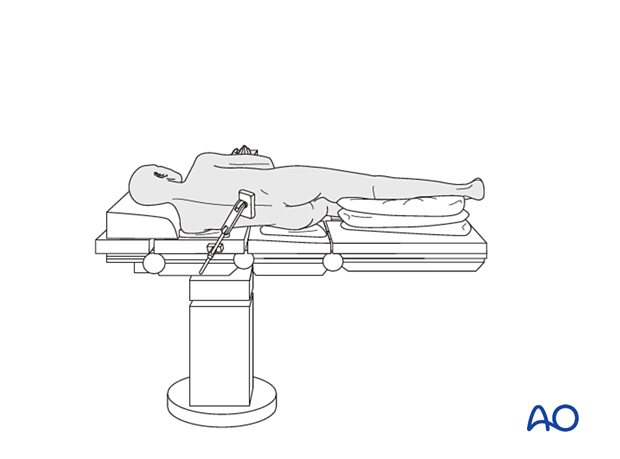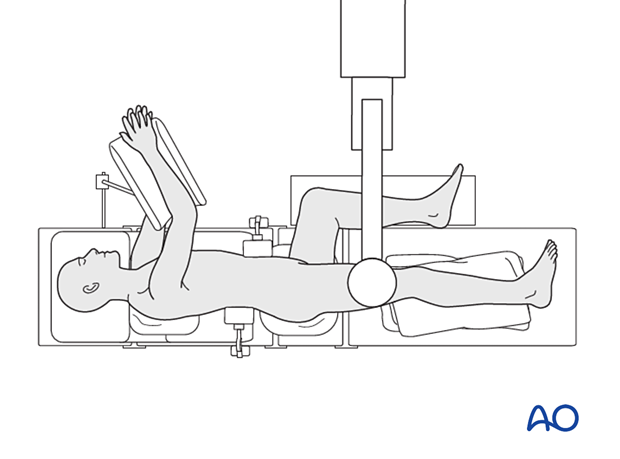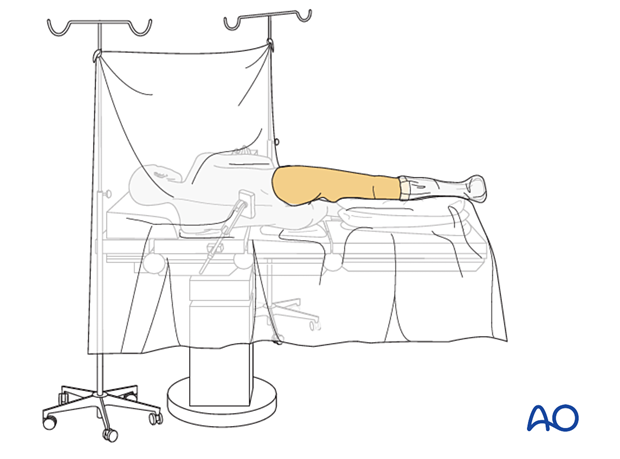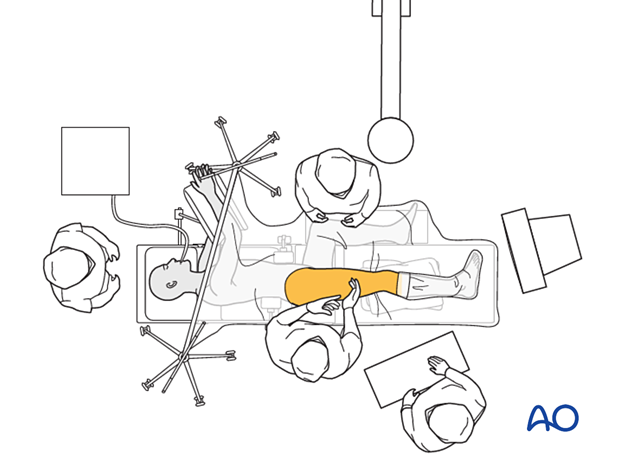Lateral decubitus position
1. Lateral decubitus position
This position may be useful depending on the patient's anatomy and other comorbidities.

2. Preoperative preparation
Operating room personnel (ORP) need to know and confirm:
- Site and side of the fracture
- Type of operation planned
- Ensure that the operative site has been marked by the surgeon
- Condition of the soft tissues (fracture: open or closed)
- Implant to be used
- Patient positioning
- Details of the patient (including a signed consent form and appropriate antibiotic and thromboprophylaxis)
- Comorbidities, including allergies
3. Anesthesia
This procedure is performed with the patient under general or regional anesthesia
Long-lasting postoperative complete pain blocks for the patient with injured leg should be avoided as this could hide symptoms of a subsequent compartment syndrome.
4. Positioning
- Ensure that all bony prominences are adequately padded.
- Ensure that the contralateral limb is positioned so that when fluoroscopic imaging is used during surgery, it is not superimposed with the injured limb.
- In many instances, it may be optimal for the patient to be in a semi-lateral decubitus position to allow for appropriate reduction techniques (access to the medial distal femur)
- Position the image intensifier on the opposite side of the injury and the operating surgeon.
- Place the image intensifier display screen in full view of the surgical team and the radiographer

- Ensure that you can get good-quality AP (illustrated) and lateral x-ray views of the distal femur before draping.

5. Skin disinfecting and draping
- Maintain traction on the limb during preparation to avoid excessive deformity at the fracture site.
- Disinfect the exposed area from above the iliac crest to the foot with the appropriate antiseptic.
- Ensure that surgical access exists from the proximal femur to the midshaft of the tibia
- Place the image intensifier on the nonsterile side of the exclusion drape.
- Traditional drapes may be used. Ensure a waterproof environment for the operative site.
- Drape the image intensifier.

6. Operating room set-up
- Position the operating table (if feasible) within the operating room to allow maximum space on the operating side for the surgeon, staff, and trolleys.
- The surgeon and the ORP stand on the side of the injury. The Assistant may be on either side.
- Place the image intensifier on the opposite side of the patient, perpendicular to the patient.
- Place the image intensifier display screen in full view of the surgical team and the radiographer













